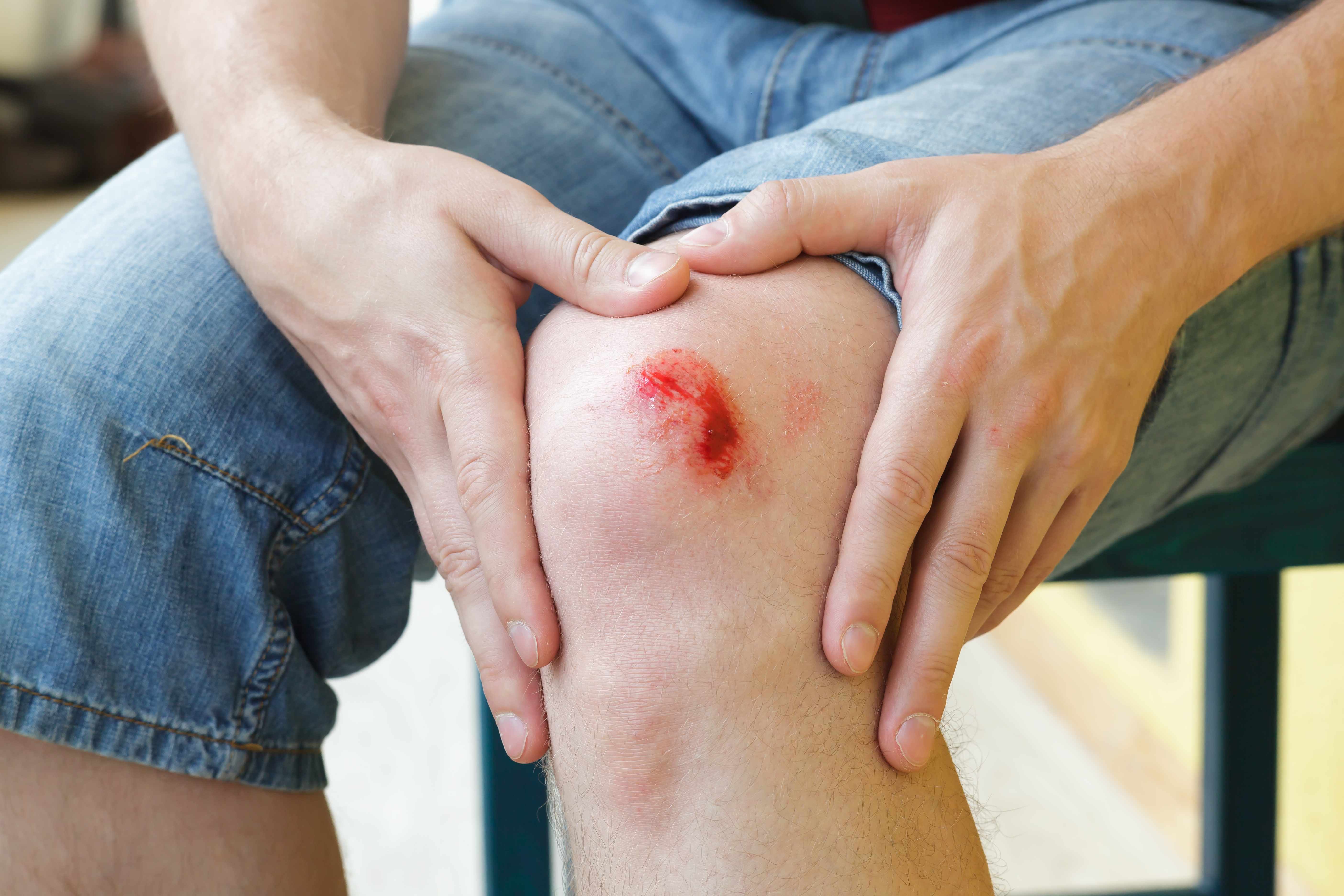
Raspberries are usually bright red and painful, and, no — not the fruit. Raspberries, strawberries, road rash — whatever you call these scrapes — are painful and can be difficult to treat. Some suggest wrapping the wound, while others suggest airing it out. Chelsea Mann, M.D., a Mayo Clinic Health System Family Medicine physician, sets the record straight for treating skin abrasions.
“Skin abrasions are wounds to the top layer of skin,” says Dr. Mann. “They generally heal quickly, but large and deep abrasions can cause scarring. The biggest threat is infection, so it is important to clean and treat the injury properly.
We see more skin abrasions in the spring and summer, because it’s baseball, softball and bicycling season. People are outside more and wear less clothing, which eliminates a protective barrier to the skin. A kid will slide into home base for the winning run but ends up with a painful trophy on his or her leg. Then, his or her parents have to figure out the quickest way to get the wound to heal.”
Dr. Mann’s tips for treating skin abrasions are:
- Clean and wash your hands.
Caring for the wound with hands covered in everyday bacteria will increase the likelihood of an infection later on. - Rinse and clean the abrasion.
Hold the affected area under lukewarm tap water for a couple of minutes. Do not aggressively scrub the wound. Attempt to gently remove any dirt or other particles. - Apply a thin layer of petroleum jelly or antibiotic ointment.
This will help keep the affected area moist and prevent infection. If you notice the formation of a rash or redness due to antibiotic ointment use, suspend use of the ointment. - Protect and cover the abrasion.
Use a clean bandage or a piece of gauze with tape. This helps keep the wound clean, prevents bacteria from infecting the area and helps keep the wound from reopening. It also keeps the area moist to help with healing. - Change the dressing.
Swap out new bandages at least once a day or when the affected area gets wet or dirty. Remove gauze in the direction of hair growth. Stop if you feel resistance due to a scab stuck to the bandage. If resistance, make a salt water solution using 1 teaspoon of table salt for every gallon of water. Soak your bandage-covered wound in the solution for a few minutes, and then try to remove the bandage. This may take several attempts. - Do not pick scabs.
Scabs are your body’s natural way for protecting the wound from dirt and germs, as well as a good sign that new skin is growing beneath. - Check for signs of infection.
If an infection is present, antibiotics may be necessary to treat the injury. Signs of infection include:- The wound is still not appearing to heal or has gotten worse, despite a few days of proper care
- Increasing amounts of pain
- The abrasion or the area surrounding it continues to remain warm, swollen or red
- Fever
- Pus, drainage or other discharge coming from the abrasion







